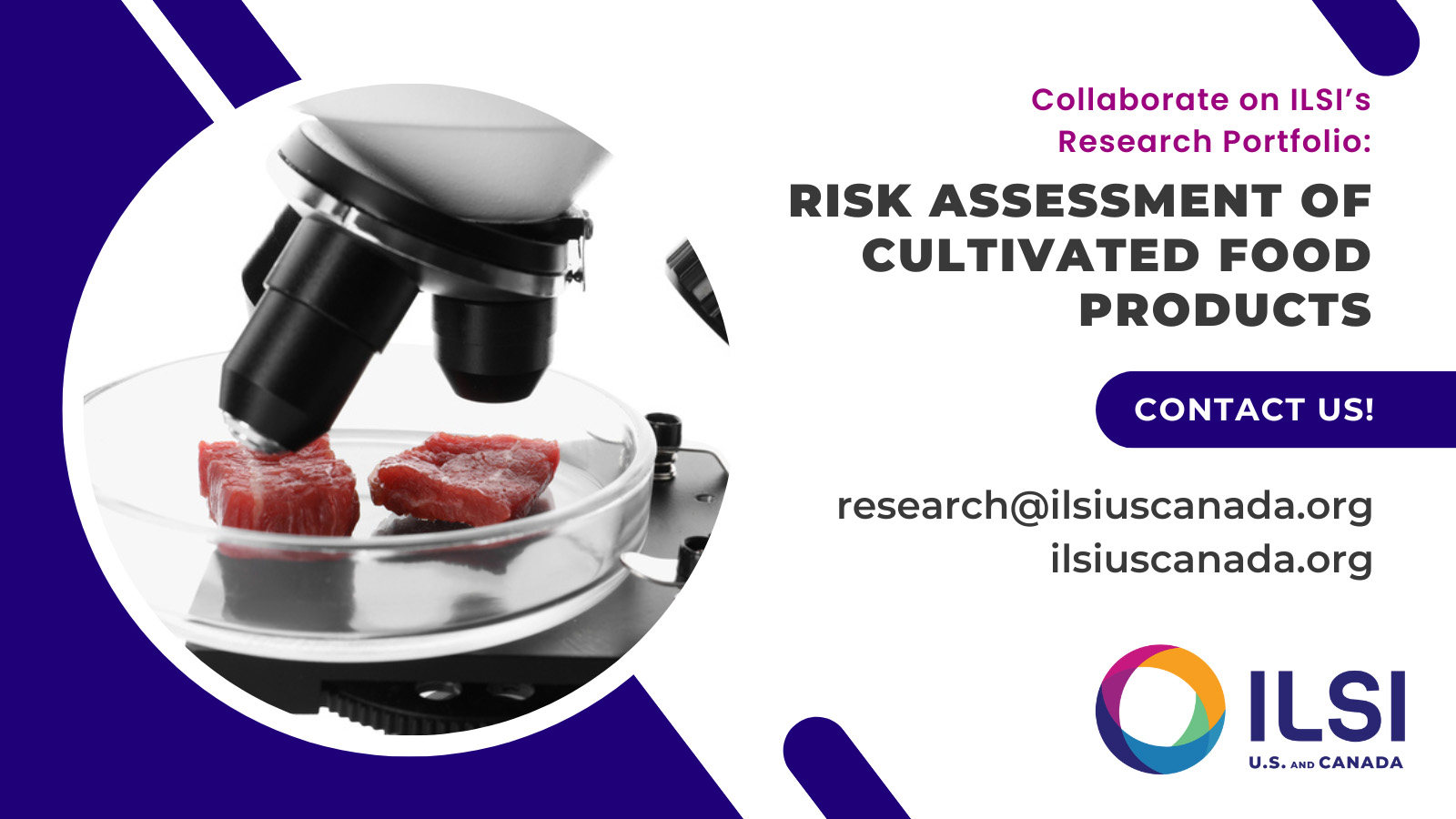
Our Purpose
The development and commercialization of cultivated meat is progressing at unprecedented speed, which requires that knowledge gaps relevant to its safety and risk to consumers be identified at a similar pace. The Risk Assessment of Cultivated Food Products portfolio aims to identify these gaps and address them in a neutral forum involving industry, academia, and government representatives.
Leadership Committee
- Stephane Vidry, PhD (Chair) – Global Executive Director, ILSI, USA
- Melanie Abley, PhD – Office of Chief Scientist, Senior Advisor for Food Safety, Nutrition and Human Health, USDA, USA
- Jeff Farber, PhD – Adjunct Professor, Dept. of Food Science, University of Guelph, Canada
- Naya McCartney, PhD – Regulatory Safety Scientist, Vow, USA
- Scott Lowe – Senior Director of Regulatory Affairs, Ajinomoto Health & Nutrition North America, USA
- Haley Oliver, PhD - Professor of Food Science, Purdue University, USA
- René Viñas, PhD, DABT – Global Regulatory & Public Policy, Senior Manager, Toxicologist, UPSIDE Foods, USA
- Andrew Stout, PhD – Research Scientist Metabolic and Tissue Engineering, Tufts University, USA
- David Prescott, PhD – Research Scientist Chemical Safety, Health Canada, Canada
- Jayadev Raju, PhD – Research Scientist Chemical Safety, Health Canada, Canada
Use the form below to send us an idea, request more information, or let us know that you would like to collaborate with ILSI!
About ILSI
Headquartered in Washington, D.C., the International Life Sciences Institute (ILSI) is a global, nonprofit federation committed to improving public and planetary health by convening international experts from academia, the public sector, the private sector and other NGOs to advance evidence-based scientific research.
ILSI operates within a framework of the highest principles of scientific integrity. Our trusted professionals and volunteers around the world work synergistically and transparently across sectors and disciplines.


